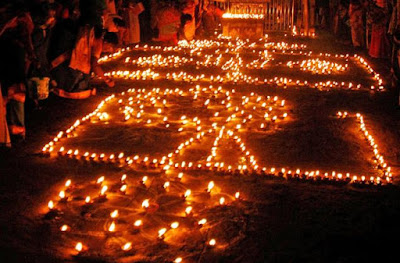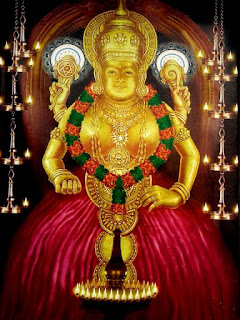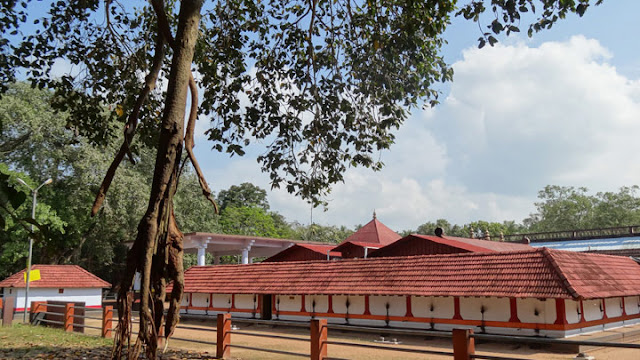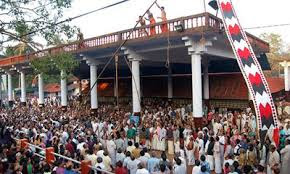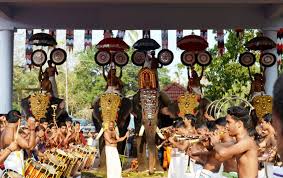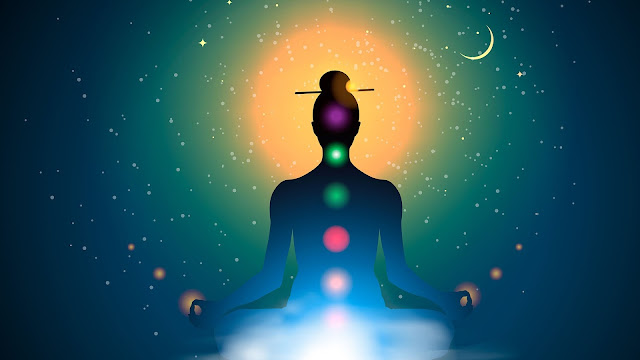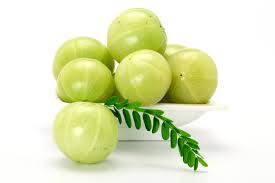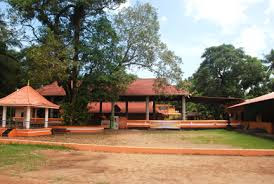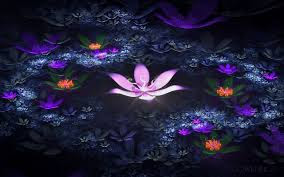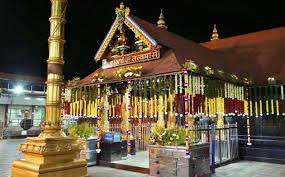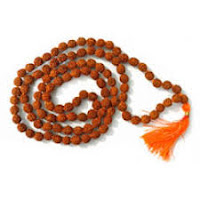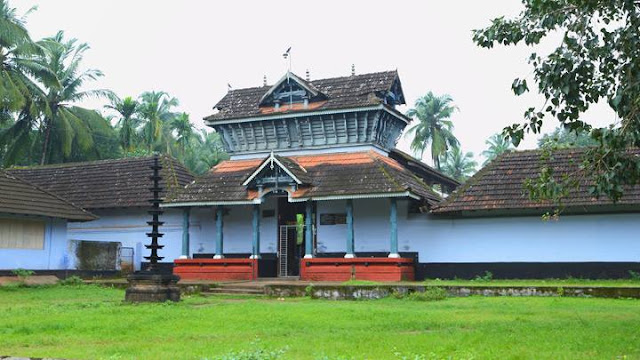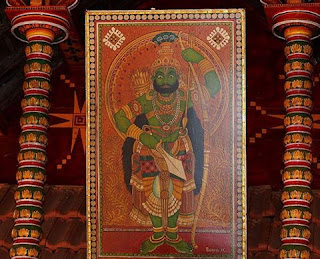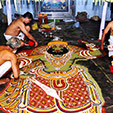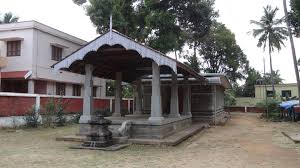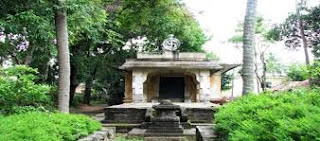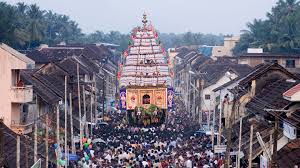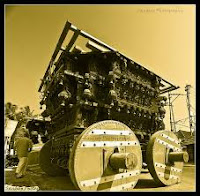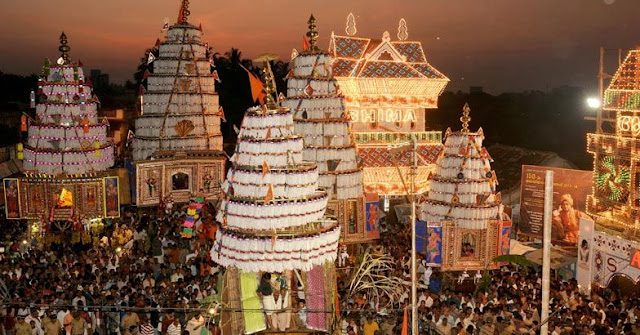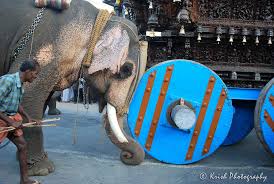The auspicious Thrikkarthika Festival falls on December 12, 2016.
Thrikkarthika or Karthikai Deepam Festival is a grand Festival of Lights. The festival is observed in most Hindu homes and every temple of Tamil Nadu and Kerala, and falls in the month of Vrishchikam. This occurs on the day when the moon is in conjunction with the constellation Karthika(Pleiades) and Pournami. This constellation appears as a group of six stars in the firmament in the shape of a pendant from the ear.
Keralites celebrate the festival of lights literally on 'Thrikkarthika day', rather than Deepavali. In the month of Vrichikam(Nov-Dec), Karthika day which mostly falls on the full moon day is celebrated as Thrikkarthika. As usual the celebration includes a feast with sweets, visiting nearby temples in morning and evening especially Devi Temples. Some people believes it is a celebration for the killing of demon "Narakasura' but most of the people believes this day as the birth day of Goddess 'Karthyayani Devi'.
Usually on Thrikkarthika day no crackers are lighted but the highlight is given for devotion. In Many parts of Kerala people do not even make a feast on this day but make rice soup(Kanji) with 'Karthika Puzhukku'(A vegetable preparation of a mixture of several underground stems ). In the evening each and every Hindu home is illuminated with small earthen oil lamps in the lawn,on the walls, on the terrace, in the pooja room, on the steps and in each and every corner and it will be a beautiful sight. Almost all Devi Temples in Kerala will also be decorated with thousands of lighted small oil lamps.
The lighting of the lamp is significant because in our visual experience, it is light which makes us see. It plays a significant role in our perception of the world around us. If there is no light, there is no experience of anything around us. Like Diwali, Thrikarthika’s message is also the same – victory of dharma. So, people are lighting traditional lamps known as ‘Chirad’ made of clay in their homes and temples at evening twilight. Actually children are more interested in lighting lamps than elders. Lamp is known as ‘Vilakk’ in both Malayalam and Tamil and hence lighting lamps on Karthika day of Vrischikam month is known as Karthika Vilakk.
Many legends and lyrical poetry have grown around Karthika star. The six stars are considered in Indian mythology as the six celestial nymphs who reared the six babies in the saravana pond which later were joined together to form the six faced Muruga. He is therefore called Karthikeya, and in Tamilnadu, this day is celebrated as Lord Muruga's birthday. As the six nymphs helped in growing the six child, lord shiva blessed immortality to the six nymphs as ever living stars on the sky. Any worship performed to this six stars is equal to worshiping lord Muruga himself. They are worshiped by lighting up rows of oil lamps (Deepam) in the evening of the festival day around the houses and streets.
The Thrikkarthika day is the main festival day of several Devi temples of Kerala. The most importance is given to the Devi at 'Kumaranallur' of Kottayam District. Some people even refer to this day as 'Kumaranallur Thrikkarthika'.
Kumaranalloor Devi Temple:
The Kumaranalloor temple is situated in the Perumbaikad village of Kottayam Taluk. Located around 5 kilometers away from Kottayam town, the Devi temple has an interesting legend behind. The temple was originally intended for Kumaran (God Subramanian) but was occupied by Devi telling Kumaran-alla-ooru means the place is not for Kumaran and thus came to be called Kumaranalloor.
The Kumaranalloor Thrikkarthika festival is celebrated here in the month of Vrishchikam (November - December). The ten day festival starts with the hosting of holy flag (Kodiyettam) on the first day. Special poojas are conducted from second day onwards. There will be 'Arattu' (holy bath) of the idol in the nearby Meenachil River. The ninth day or the day 'Karthika' is the most important one. It is very special for Devi and the resplendent "deepakazcha" at the temple in the evening is a divine experience.
Chakkulathukavu Devi Temple:
Sree Chakkulathukavu Devi Temple, dating back to about 3000 years, is located at 'Neerattupuram' on the border of Patthanamthitta and Alappuzha Districts of Kerala.
Here the Devi - goddess is in swayambhu - self- manifested in the shape of Lingam.Thrikkarthika Festival' (the birthday of the goddess) in the Malayalam month of 'Vrichikam' is well celebrated on a grand scale in this temple. On this important day, the major attractions are 'Laksha Deepam' ( 100,000 oil lamps are light on the temple premises) and 'Karthika Pillar. The former is symbolic of spread of wisdom, prosperity and goodwill and the latter refers to an event in which Aricanut tree, decorated with plantain, straw, dry leaves, etc., is set on fire, symbolizing eradication of evil thoughts, negative elements from our mind.
On Thrikkarthika Day the 'Pongala Festival' here is performed by lots of women devotees who light up oil lamps at the temple and in their houses. Women folks prepare Pongala (in Tamil Pongal) by cooking rice with Jaggery (Naattu sakkarai or Vellam) and grated coconut in earthen pots set in the open places near the temple and offer it to the goddess. The make-shift hearth is made of bricks and one can see lines of Pongala pots on the paths leading to the temple.
Vadakkunnathan Temple:
On the Thrikkarthika day in Vrischikam(November-December) morning poojas for Vadakkunnatha are conducted at the Southern compound wall.It is believed that on this day Lord Vadakkunnatha will sit on the compound wall looking Southwards to see his consort's (Kumaranalloor Kathyayani Devi) return procession after the Thrikkarthika Aarattu in Meenachil river. Vilwamangalam Swamiyar once visited this temple in the morning on Thrikkarthika day. He realized the absence of Vadakkunnatha inside the Sreekovil. So he went around and found the Lord on the compound wall. It was Vilwamangalam who started the pooja on Southern compound wall on Thrikkarthika day.
Kadampuzha devi temple:
The Karthika day in Vrischigam is celebrated as Pradishta day in Temple with Sudhi, Navakom, Panchagavyam, special kalasams etc on the auspices of the Thanthri of the temple. The Poomoodal and all special poojas on this day are performed by Devaswom directly. Unlike other temples, the Karthika deepam lightings are done in the early hours in the morning. There will be large scale Prasada Ootu to the devotees in specially put up vast pandal in temple compound from 10.30 am onwards which may extend to the evening. The number of devotees who attend this religious feast may well cross 15000. There will be special poojas and vadhyams particularly in Sree Madambiyarkavu, a Kiratha Moorthy Temple situated 2 km away from here. Due to the ceremonial connections the Karthika day poojas in this Temple are offered by Kadampuzha Devaswom.


